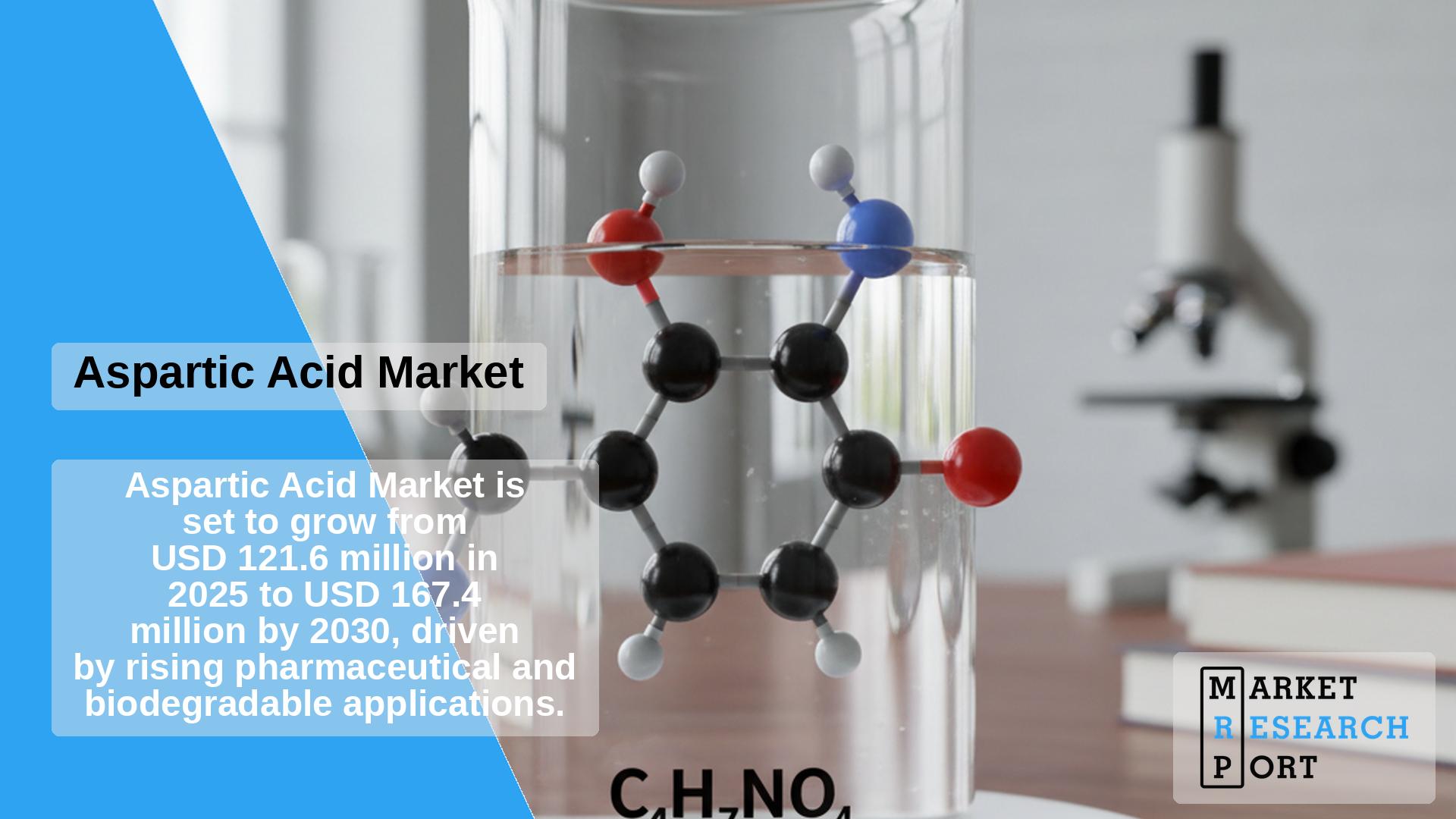
The global aspartic acid market was valued at USD 121.6 million in 2025 and is projected to reach USD 167.4 million by 2030, expanding at a CAGR of 6.6% during the forecast period. The demand for aspartic acid is driven by its growing use in pharmaceuticals, dietary supplements, and biodegradable materials. Rising consumer preference for natural and eco-friendly ingredients continues to be a major factor driving market growth. Increasing awareness about health benefits, environmental sustainability, and the use of bio-based raw materials is strengthening the market outlook.
Aspartic acid has broad applications in the pharmaceutical and nutraceutical industries. It is increasingly used in dietary supplements due to its role in energy metabolism, hormone regulation, and muscle growth. Formulations such as calcium and magnesium aspartates are gaining traction, particularly in sports nutrition and male fertility products. The rising trend of fitness and preventive healthcare is contributing significantly to its growing demand worldwide.
The L-aspartic acid segment accounted for about 63% of the global revenue in 2024, due to its superior biological compatibility and widespread use in medicines and performance supplements. DL-aspartic acid is expected to grow at a rate of 6.3% between 2025 and 2031. Its low production cost and versatility in industrial applications such as fertilizers and general supplements are boosting its adoption. Manufacturers continue to favor DL-form for cost-effective formulations in non-clinical sectors.
Polyaspartic acid was the largest application segment in 2024, owing to its strong performance as a biodegradable alternative to synthetic polymers. Its use is expanding across coatings, water treatment, and cleaning products due to its solubility and environmental friendliness. The aspartame segment is forecasted to register a 7% CAGR through 2031, driven by the growing demand for low-calorie sweeteners in processed foods and beverages. Feed supplements are also emerging as a promising segment as the livestock industry prioritizes animal health and natural nutrition sources.
North America dominated the global market in 2024, accounting for the largest revenue share due to advancements in biotechnology and extensive R&D investments across health and agricultural sectors. Canada is set to grow at a CAGR of 7.1% through 2031, supported by sustainability trends and industrial innovation. The U.S. continues to lead the regional market as the demand for nutritional and pharmaceutical applications increases.
Europe remains a significant contributor, with rapid adoption of green materials and regulatory encouragement for biodegradable chemicals. The UK market, in particular, is experiencing robust growth as consumers shift towards sugar-free products and environmentally safe bioplastics. In the Asia Pacific region, economic development, population expansion, and the rise of middle-class consumers are boosting market demand. China leads production, driven by strong pharmaceutical and food manufacturing sectors.
The market remains moderately fragmented, with global manufacturers focusing on strategic collaborations and technological advancement. Several players are investing heavily in sustainable production technologies to reduce environmental impact and improve profitability.
| Market size value in 2025 | USD 121.6 million |
| Revenue forecast in 2030 | USD 167.4 million |
| Growth rate | CAGR of 6.6% from 2025 to 2030 |
| Historical data | 2018 – 2023 |
| Forecast period | 2025 – 2030 |
| Report updated | October 2025 |
| Quantitative units | Revenue in USD million and CAGR from 2025 to 2030, volume in kilotons |
| Report coverage | Revenue forecast, competitive landscape, growth drivers, and key trends |
| Segments covered | Product, application, and region |
| Regional scope | North America, Europe, Asia Pacific, Latin America, Middle East & Africa |
| Country scope | U.S., Canada, Mexico, UK, Germany, France, Italy, Spain, Russia, Japan, China, India, Australia, South Korea, Thailand, Indonesia, Brazil, Argentina, South Africa, Saudi Arabia, UAE |
| Key companies profiled | Ajinomoto Co., Inc.; Evonik Industries AG; Prinova Group LLC; Iris Biotech GmbH; AnaSpec, Inc.; ChemPep Inc.; KYOWA HAKKO BIO CO., LTD.; Tocris Bioscience; Flexible Solutions Inc; Yantai Hengyuan Bioengineering Co. Ltd. |